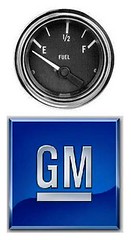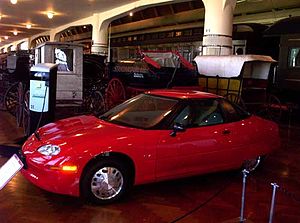GM announced last week that it is ready to leave bankruptcy protection and enter the world of selling cars once again. Fritz Henderson, the company’s Chief Executive Officer (CEO) says the company is sleeker and more customer-friendly.
Having borrowed $50 billion in government loans, it better be something more than it once was.
Henderson also said the company would be more receptive to its customer’s needs and wants when it comes to designing and building new models, and that these new vehicles would be launched faster.
 Image by Mike Licht, NotionsCapital.com via Flickr
Image by Mike Licht, NotionsCapital.com via Flickr
Sounds a lot like the never-changing world of politics. During election campaigns, politicians always make promises which may – or more often than not – may not actually happen. Politicians always talk about listening more to their constituents, and acting faster on those requests.
Guess when government money bails you out, you become more politician-ish?
Though, if GM was really paying attention to their customers, they probably wouldn’t have ended up filing for Chapter 11 Bankruptcy in the States in the first place. One of the golden rules to running any successful business is to ensure you are meeting the needs of those who will pay for your products and services.
Failing that, you might as well close up shop, because you are ignoring the people that will put bread on your table.
Henderson says that going forward, the company’s top priorities will be customers, cars and culture. Sounds like an election promise, and we all know how far those go in the real world.
As gas prices continued to soar uncontrollably due largely in part to oil industry greed, GM continued to build and sell gas hoarding machines, which their customers weren’t buying, because they couldn’t afford all that gas.
But, in the 1990’s GM came out with the world’s first fully electric car – the EV1. It was capable of traveling on average about 160KM on a single charge – more than enough for most day-to-day use. It took a full eight-hours to c
 Image via Wikipedia
Image via Wikipedia
GM not only canceled the EV1 project, they destroyed it – actually hunting down their own loyal customers and repossessing the cars at the end of their leases, without giving their customers the option to buy or extend their lease. The reclaimed cars were crushed like tin cans, except for a handful which were allowed to be put on display in vehicle museums – sans any functioning engines. GM didn’t want the legacy of their success to show, claiming the vehicles were dismal failures and no one was willing to buy them.
Most of the EV1 owners were willing to buy them, they held massive protests, begging and pleading with GM to allow them to either lease of buy their cars at the end of their lease.
But due to pressure from the former Texas oil tycoon turned president, George W. Bush, and the strong oil lobby groups, GM killed the electric car because these groups saw this successful electric car as a death sentence to their monopoly over the world’s transportation systems.
Though if GM were smart and really had intentions of listening to their customers, they should have fought back. Sure, they would have been going after the American government and the mighty power of the oil industry, but they aren’t exactly a small player either – they were the world’s largest company.
Had GM kept the EV1, today, they probably would have a whole product line of electric cars, even better than their first attempts. They may even be the only car company in the world producing completely electric vehicles, at a time when oil prices continue to stay high, and consumers look towards other ways to travel, to save fuel costs.
So, when the CEO of GM says he’s planning on listening to his customers, and design vehicles which cater to those very same customers, he’s chirping from uneven ground.
![Reblog this post [with Zemanta]](http://img.zemanta.com/reblog_b.png?x-id=61a1c3e4-dfd1-4b3a-9d58-4fe411ad1ba1)








No comments:
Post a Comment